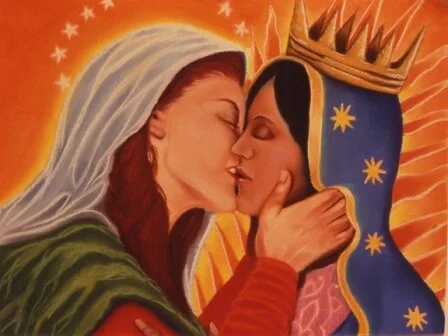Final Project Artist Statement by student Daniela Nunez
I created these images because I, like Sandra Cisneros, Luz Calvo, and Alma Lopez wanted images that represent the “real” Latina. The one major image Latinas have growing up is the Virgen de Guadalupe. While she is a loved role model, she represents an extreme, something that seems unrealistic for many girls and women to strive for.
The first image is of my mom and nana. I wanted to depict them because they are the strongest women I know. They are my role models, and if I could do half as much in my lifetime as they have, I will be well off. This photograph is very simple, because they live very simply.
The second image is of my roommate Maria. She is one of my role models as well. She moved here from Ecuador when she was in elementary school. She is draping the Ecuadorian flag to represent her home country, and has a San Francisco hat for her second home.



